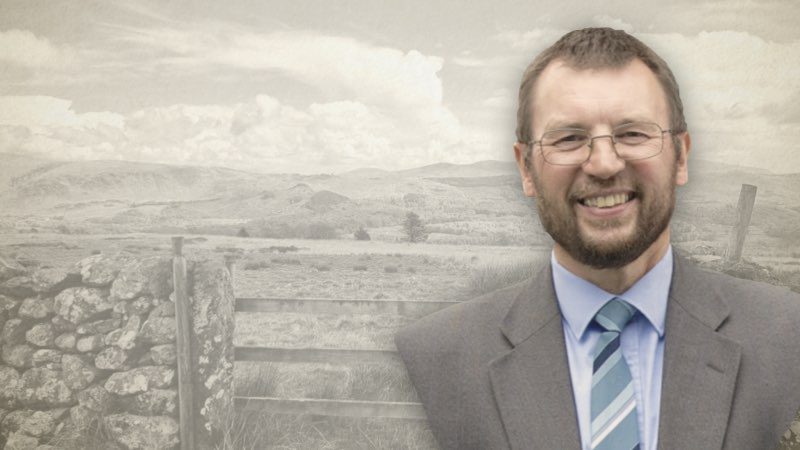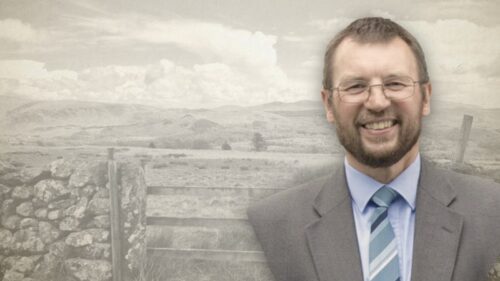
Here Am I; Send Me
The sixth chapter of Isaiah has long been admired for the grandeur of the vision it contains of the Lord’s divine glory. For Christians, Isaiah reveals much of Christ and His successful work of atonement. It is Christ who is seated on the throne and the church is His train. The Lord God Jehovah in His three persons is also evident, implied perhaps, in the threefold repetition of ‘Holy’ by the worshipping heavenly host.
Only one priest and king
Isaiah supplies a precise date for this vision. It was in the year king Uzziah died. Uzziah had been a successful king in Judah and the nation prospered while he was faithful to Jehovah, and ‘did that which was right in the sight of the Lord’, however towards the end of his life ‘his heart was lifted up to his destruction’, and he usurped the priests’ role by offering incense in the temple. He was struck at once with leprosy and lived out the remainder of his life in isolation.
Christ on His throne
There is no doubt Isaiah’s vision is of the Lord Jesus Christ seated upon His throne in glory. In the Old Testament the invisible God was manifested by the Eternal Word in physical form. Abraham, Jacob, Moses, Aaron and others all met the Lord and it was the Lord Jesus Christ they rejoiced to see. This is confirmed by John who tells us, ‘No man hath seen God at any time; the only begotten Son, which is in the bosom of the Father, he hath declared him’. Later John re-confirms it was Christ whom Isaiah saw, declaring, ‘These things said Esaias (Isaiah), when he saw his glory, and spake of him’.
The seraphim
Although it is common to identify the seraphim as an order of angels it is by no means certain that created angels are intended here. Some consider these ‘fiery burners’ (as the name suggests) to be representations of the eternal, invisible God; Father, Son and Holy Ghost. Here their presence around the throne of Christ may signify the glorious unity of purpose within the Godhead for the work of redemption and the everlasting covenant.
Gospel preachers
Others see them as attendants ready to do Christ’s bidding following Christ’s ascension and when seated on His throne. The seraphim would then be the apostles, preachers and other gospel ministers sent to gather the elect in the last days. Their wings cover their faces for humility, and their feet so as to travel only at Christ’s pleasure and direction. With two wings they move with speed and urgency.
Sin confessed and forgiveness received
Whether these or some other interpretation is better, it is certain God’s glory and holiness is at the heart of the vision Isaiah received. Isaiah’s reaction is at once a sense of his own sinful state. He cries out in fear for himself and the people with whom he lives. Yet, what follows is a clear statement of grace and forgiveness through sacrifice.
The bringing of a coal from the altar with tongs and its touching Isaiah’s lips, speaks of Christ’s work for sin as our altar, sacrifice, and priest. Our Lord Jesus was typified in the Old Testament by ‘the altar of the burnt offering’, and Isaiah, having been touched by the effectual redeeming work of Christ, is told his iniquity is taken away and his sin is purged.
Who will go for us?
A search is made for one to be sent to the Jewish people with the word of the Lord. It ends when Isaiah volunteers himself saying, ‘Here am I, send me’. This is often portrayed as Isaiah’s commission as a prophet. Yet there is more than a hint here of something far greater and grander: the establishment of the plan of redemption in the council of peace, and the voluntary submission of the Eternal Son to serve as the Lamb of God in His substitutionary role as Surety for God’s elect, and Mediator of the new covenant.
A reprobate people
The message Isaiah is to carry to Jerusalem and Judah is of God’s sure, certain and unalterable decision to bring judgment upon them. There will be a great wasting of the people, desolation of the nation and abandoning of the land. The prophet’s message is not a call to repentance, far less an offer of forgiveness. Isaiah knows it will be rejected and despised and he is called to declare inevitability. The people will see but not perceive, hear but not understand. There will be no forgiveness, no conversion, no healing. This is a reprobate people from whom the Lord will withhold all repentance and faith.
A remnant that remains
Yet, even now in this dark message, the Lord gives His beloved elect a word of comfort. It is true the nation will perish, yet God’s covenant promise of a coming holy seed will not be compromised. A tenth, or a remnant, will remain. Though they look dead and appear cut down, as a felled tree, yet in them life will be preserved. As from ‘a teil tree, and as an oak whose substance is in them’, the Messiah, the Branch, shall yet come forth, and through Him the elect from all-nations will be called to salvation.
Our successful Saviour
Be assured, the glory of the vision and the majesty of the One who sits upon His throne will neither be dimmed nor decreased. The covenant purpose of grace will not be prevented or even hindered. Isaiah’s vision of the Lord was a vision of the sovereign Christ seated in victory who ‘went forth conquering, and to conquer’. Isaiah was given a glimpse of the King victorious by which the Lord comforted His people in the midst of their trials.
Amen
Peter Meney is the Pastor of New Focus Church Online and the Editor of "New Focus Magazine" and publisher of sovereign grace material under the Go Publications imprint. The purpose and aim of the magazine and books is to spread as widely as possible the gospel of Jesus Christ and the message of free, sovereign grace found in the Holy Bible, the Word of God.
Peter Meney on Doctrinal Matters
Peter Meney on Practical Matters
Peter Meney's Sermons
Peter Meney's Scripture Meditations
Peter Meney's Children's Talks




